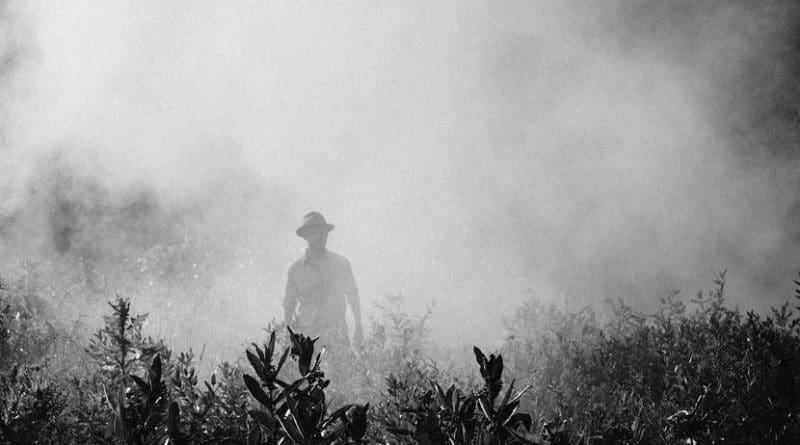Farmers Hard-Up In Breaking Pesticide Habit – OpEd
In 1962, Rachel Carson wrote, in Silent Spring,” For the first time in the history of the world, every human being is being now subjected to contact with dangerous chemicals fom the moment of conception until death.”
Sixty eight years have passed and nothing has changed. Millions still face the same danger as the use of pesticides continue to increase worldwide.
Worldwide, more than four billion pounds of pesticides are produced amounting to 23 billion US dollars, the Malaysian-based Pesticide Action Network or PAN said.
Pesticides are extensively used in modern agriculture , to enhance the yield quality and quantity, thus ensuring food security for the ever-growing population around the globe. China is the major producing and using country, followed by the USA and Argentina, which is increasing rapidly PAN added.
This year, the global pesticide usage has been estimated to increase up to 3.5 million tonnes. lthough pesticides are beneficial for crop production point of view, extensive use of esticides can possess serious consequences because of their bio-magnification and persistent nature, PAN estimated.
Diverse pesticides directly or indirectly polluted air, water, soil and verall ecosystem which cause serious health hazard for living being. In the present manuscript, an attempt has been made to critically review the global usage of different pesticides and their major adverse impacts on ecosystem, which will provide guidance for a wide range of researchers in this area.
Pesticide usage in Asia
The use of pesticides in agriculture is increasing rapidly in developing countries, especially in Southeast Asia the World Health Organization or WHO has reported. It said that approximately 20% of pesticides are used in developing countries with increasing rate of usage. An annual increase in import of pesticides is reported as 61% for Cambodia, 55% for Laos and 10% for Vietnam. The manufacturing of pesticides in India started in 1952, with the production of benzene hexachloride, followed by DDT. The synthesis of pesticides increased enormously. In 1958, India manufactured over 5000 metric tonnes of pesticides which increased to 85,000 metric tonnes in the mid-1990s with the registration of 145 pesticides and the major pesticides produced are insecticides.
India is one of the major pesticides producing countries in Asia with annual production of 90,000 tonnes, and it stands at twelfth position in the world in the manufacturing of pesticides, WHO added.
Pesticide contamination and its impacts on global ecosystem
Pesticides have become an environmental hazard as their safe storage and disposal are challenges. Pesticides, when used in high quantities, pollute soil and water, causing damage to its microflora and microfauna, and also hinder the absorption of important mineral nutrients by plants, Dr. Coyle Sterling of the Plant Sciences Division of Cornell University said.
To measure the ecological-toxicology of pesticides, indexes like Environmental Impact Quotient and Environmental Risk Index have been used.
The leaching of pesticides also leads to the pollution of the local water bodies. For example, the catchment area of the Lake Victoria in Kenya has six rivers that carry pollutants to the lake. Winam Gulf is the most polluted part of this lake and pesticide poisoning of fishes with endosulfan harmful pesticides (simazine, atrazine and terbutryn) in high concentrations, Dr Sterling noted.
Why Farmers Continue to Use Pesticides Despite Environmental, Health and Sustainability Costs
Use of chemical inputs such as pesticides has increased agricultural production and productivity. However, negative externalities from such use have increased too. These externalities include damage to agricultural land, fisheries, fauna and flora. Another major externality is the unintentional destruction of beneficial predators of pests thereby increasing the virulence of many species of agricultural pests.
Furthermore, increased mortality and morbidity of humans due to exposure to pesticides are recorded especially in developing countries. The costs from these externalities are large and affect farmers’ returns.
However, despite these high costs, farmers continue to use pesticides and in most countries in increasing quantities. In this paper, we examine this paradox and show why farmers continue to use pesticides despite the increasing costs.
Farmers need pesticides to grow safe, healthy food. Without pesticides, farmers would lose a significant portion of their food crops, which leads to food waste and rising costs at the grocery store.
“Pesticides are essential for successful food production,” says Dr. Ruth MacDonald, a food scientist and interim senior associate dean of Iowa State University’s College of Agriculture and Life Sciences.

